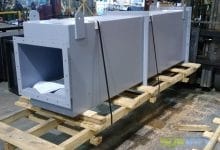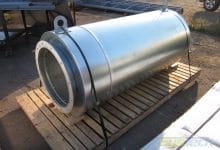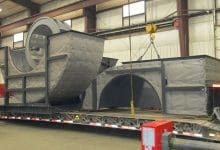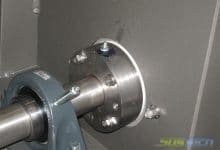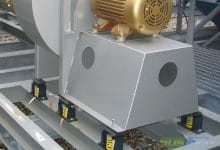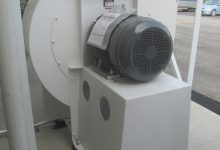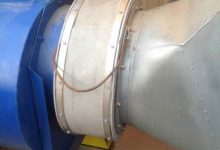Industrial Fan Noise Control
Understanding fan noise and subsequent impact go beyond a review of inlet and outlet sound power or pressure values supplied by a fan manufacturer. Careful consideration must be given to all the sources of noise from the fan. As important as the fan itself, is the environment where it’s placed, this will ultimately determine the solution and the degree we attenuate the noise! When reviewing an engineering specification and before installing a fan in a noise-sensitive area, it is important to identify the various sources of fan “breakout” noise and understand the means to address and attenuate them.
Facility Fan Sound Controls
The attached illustration is of a belt-driven fan that might be used in a typical process fan application. It is a centrifugal fan mounted on a unitary base with vibration isolators equipped with inlet and outlet flex connectors. (Axial fan noise can be addressed similarly.) Hover over the illustration to identify typical fan noise attenuation options.
Additional sound can be attenuated by:
- Select a fan on the highest efficiency point on the performance curve.
- Construct an enclosure around the complete fan assembly.
- Choose a high-efficiency wheel design.
- Control the fan with a Variable Frequency Drive – 5 dBA with a 20 % speed reduction.
A typical bid specification might state the maximum noise level for the outlet of the fan at some distance and reference point. Should the specified fan installation be ducted both in and out, the maximum noise level from the fan housing might be specified? But do we have enough information to provide the noise attenuation necessary to meet the client’s expectations for a noise-sensitive site?
Fan Inlet and Outlet Silencers
Noise from the inlet and outlet of axial and centrifugal fans are typically addressed with in-line attenuators or silencers. The level of noise to be attenuated varies by fan type and depends upon the fan and wheel design as well as the speed or rpm of the wheel or impeller.
The typical sound level reduction would be 10 to 25 dBA depending on allowable pressure drop through the silencer, the silencer length, type, and weight.
Sound Blankets or Rigid Cladding for Housing Noise
When we attenuate the inlet and the outlet, the resultant noise is defined as the housing breakout noise, and we can attenuate that with a flexible noise blanket or rigid cladding attached to the fan housing. Cladding attenuation is expected to result in an 8 to 12 dBA reduction..
Reducing Noise from Fan Shaft Opening
Now let’s look at some of the additional breakout points from our fan that are frequently overlooked. The fan shaft as it penetrates the housing leaves an open area around the shaft. Depending on the size of the shaft and opening, this can contribute to major breakout noise. A simple shaft seal is usually enough to seal up the opening. Along with sheet metal gaps in the fan housing, review all gaps in the duct and gasketed flanges.
Vibration Isolators
Equipment with rotating components such as fans and blowers, vibrate, producing structural borne noise. Vibration isolators are used to reduce vibration transmission from the fan to the supporting structure. If the fan has vibration isolators installed, it needs to have inlet and outlet flexible connectors. Typically, flex connectors or joints, if specified, are installed for isolation, but options for airborne noise attenuation through the connector are available.
Acoustic Flex Connectors
Industrial acoustic flexible connections (or acoustic expansion joints) are installed in the inlet and the outlet of a fan to address vibration isolation as well as to provide breakout noise attenuation. They are typically constructed of neoprene inside and outside, acoustic media internal, and an optional inner metal plate. Usually, a 10 to 15 dBA reduction of the breakout noise path is expected.
Attenuation of Motor and Belt Noise
Looking further at our example, we expect belt and motor noise, both of which are contributors to the overall fan noise level. Depending on the noise level to meet, we can blanket the belt guard and specify a low noise motor resulting in a 5 to 10 dBA noise reduction.
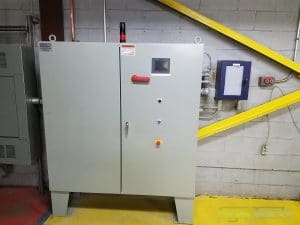
Now that we’ve addressed a single fan what happens when we install multiple fans in the same space. Using logarithmic addition, we know that two equal sound sources produce a resultant noise level that is three dBA higher. As an example, the noise from two 85 dBA fans would combine to produce 88 dBA overall.
If you’re installing a fan in a noise-sensitive space or adjacent to a residential community, specifying or purchasing a fan, considering all of the fan noise sources and the environment is a must.

